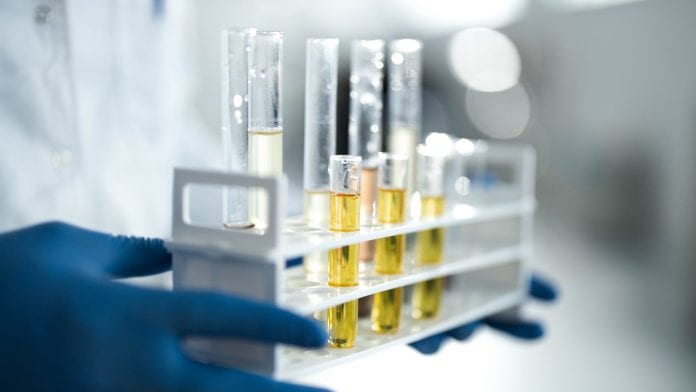
Medical Cannabis Network explores the significance of distillation in cannabis production.
Once cannabis has been extracted from its raw plant form, it can be further distilled, resulting in a purer product with CBD or THC content of more than 90%. So, how does distillation in cannabis production work?
In much the same way that the post-harvest curing and drying process for cannabis is influenced by processes introduced in tobacco production, primary methods extract distillation in cannabis production take their cue from the production of alcoholic spirits.
Extraction
Once a cannabis crop has been harvested, the process of extracting the active compounds from the raw plant matter can begin. Common extraction processes are either physical – including sieving and rosin pressing – or chemical, using solvents or other diluents to break down the plant matter. The extraction process results in an unfiltered substance called crude oil, with CBD or THC purity above 50%.
Post-extraction processing
The crude oil produced through the initial extraction must be purified, in order to maximise the cannabinoid content of the final product and eliminate contaminates and superfluous byproducts. Winterisation, whereby the oil is subjected to very low temperatures, separates out extraneous fatty byproducts including lipids, waxes and chlorophyll. This is followed by decarboxylation, which subjects the concentrate to sustained heat in order to activate the cannabinoids it contains.
Distillation in cannabis production
Cannabis production typically uses fractional or short path distillation, a process which – as its name suggests – sees distillate travel a relatively short distance. Short path distillation, which requires less pressure to be exerted on the distillate than longer distance processes, is particularly favoured when working with volatile compounds or when purifying small quantities of a substance. The distillation process applies heat, humidity and pressure to cannabis extract, forcing out any remaining impurities and residual traces of extraction solvent. Terpenes, the fragrant compounds which give cannabis its flavour, and flavonoids are removed from the concentrate, to be infused back into the final product once the distillation process is complete.
Through the steady application of a controlled temperature increase, short path distillation breaks down cannabis extract into its constituent compounds. The cannabinoids within the extract, most notably THC and CBD, can be separated out at different temperatures as each cannabinoid has a slightly different boiling point.
Once each compound has evaporated, the resulting steam is passed through a cooling tube, to condense it into liquid form. This process is repeated for each cannabinoid once the terpenes and flavonoids – these have the lowest boiling point – have been removed from the concentrate. By evaporating and then liquefying each compound individually, we can be certain that the final product will contain no residue or impurities.
With the correct equipment, the distillation process can be conducted by an amateur in their kitchen; but as with any other chemical purification procedure, cannabinoid distillation is much more effective and results in a far superior product when it is undertaken on a large scale, using industrial level equipment.
Cannabis distillate
Cleanly distilled concentrate can boast CBD or THC content of over 99% purity. Distillates, nicknamed ‘the Clear’ or ‘the Pure’, present as a clear, transparent oily substance with high cannabinoid potency: where the distillation process has been undertaken to the appropriate quality standards, pure distillate is essentially tasteless, with the reintroduction of terpenes at the final stage preferred by some users to boost the flavour profile. Pure distillate oil is more expensive by weight than almost any other single consumable currently on the market.
Distillates can be used singly or combined – for instance, by mixing high-THC distillate with high-CBD concentrate – to activate the entourage effect. The purity and potency of the final product, in combination with its receptiveness to added aromas and flavours, mean it can be used in a wide variety of products, from vaporisers, to edible gummies or baked goods, to oils which are administered sublingually.
This article appeared in the second issue of Medical Cannabis Network which is out now. Click here to get your free subscription today.









